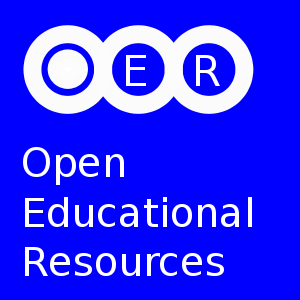 Image via Wikipedia
Image via WikipediaGROUNDBREAKING STATE-SPONSORED PROGRAM CREATES FREE COURSE MATERIALS THAT WILL SAVE COLLEGE STUDENTS MILLIONS
OLYMPIA, Wash. – Today during a telephone press conference, the Washington State Board for Community and Technical Colleges (SBCTC) announced the launch of the Open Course Library, a collection of expertly developed educational materials for 42 of the state’s highest-enrolled college courses. The materials — including textbooks, syllabi, activities, readings, assessments — cost $30 or less per student and are freely available online under an open license for use by the state’s 34 public community and technical colleges, four-year colleges and universities, and anyone else worldwide. The project is set to expand to 81 courses by 2013.
Nationally recognized as a groundbreaking initiative, the Open Course Library aims to cut down textbook costs and improve course completion rates, helping more students earn the industry-recognized degrees and credentials they need to enter the workforce.
“For employers, it’s about up-skilling the labor force,” said Shaunta Hyde, State Board member and director of Global Aviation Policy for Boeing Commercial Airplanes. “Evidence shows the burden of high college expenses can impact student success and degree completion. By offering high-quality, affordable resources, this initiative will ultimately lead to more college graduates with better job prospects.”
According to an informal study by the Student Public Interest Research Groups (PIRGs), the Open Course Library could save students as much as $41.6 million on textbooks annually if adopted at all of Washington’s community and technical colleges. The study also estimates that the 42 faculty course developers and their departments will save students $1.26 million by using the materials during the 2011-2012 school year, which alone exceeds the $1.18 million cost of creating the courses. “These savings will not only help Washington’s students afford college, but clearly provide a tremendous return on the original investment,” said Nicole Allen, Textbook Advocate for the Student PIRGs.
Each course was developed and peer reviewed by a team of instructors, instructional designers and librarians. Use of the course materials is optional, but many faculty and departments are already moving to adopt them. This fall, the mathematics department at Green River Community College in Auburn, Wash. began using the Calculus I course in place of an expensive, traditional textbook.
“I supported, and promoted, my division’s adoption of the text by David Lippman and Melonie Rasmussen text primarily because it is, in my opinion, the best pre-calculus text available. Even those in the division who might disagree ranked it no lower than second,” said Michael Kenyon, the department’s coordinator. “And there’s no contest on price. Our two main criteria for choosing textbooks are quality and price. The authors have simply written a better book at a much better price.”
Lindsey Cassels, an Esthetics Sciences student at Clover Park Technical College in Lakewood, Wash. took a class using the Open Course Library’s public speaking course materials. “It was the least expensive and most beneficial course I have taken, since the course materials cost us no more than $30 out of pocket.” Like many students, Cassels spends more than $1,000 on textbooks annually, which she says can deprive our economy of better-educated workers by making it harder to afford college. “It is outrageous to pay $200 or more per textbook. In a four-quarter program, it’s enough to make students drop out.”
Funded by the Washington State Legislature and the Bill & Melinda Gates Foundation, the Open Course Library joins the growing movement for open educational resources (OER), setting a strong example by requiring that all materials created through the program be openly licensed to the public to freely use, adapt and distribute. Already, other initiatives are lining up to use and improve the materials, including the Saylor Foundation, Project Kaleidoscope and the City of Sao Paulo, Brazil.
“It’s not often that government gets this right,” said Rep. Reuven Carlyle (D-Seattle) of Washington State’s 36th District, a champion of the Open Course Library and OER. “This is a significant state investment in this era of massive budget cuts. We had little choice but to seize the opportunity of this crisis to challenge the status quo of the old-style cost model in both K-12 and higher education.”
 Image via Wikipedia
Image via Wikipedia“Washington state is a national leader in developing innovative programs that help more students graduate from community and technical colleges,” said Josh Jarrett, deputy director of Postsecondary Success at the Bill & Melinda Gates Foundation. “This Open Course Library will ensure more students can afford to stay enrolled in college and graduate with a degree that will prepare them for the workforce.”
CONTACT:
Tom Caswell, Open Education Policy Associate and project lead, mobile (360) 747-7301, tcaswell@sbctc.edu
Sherry Nelson, SBCTC Communications, (360) 704-4308, slnelson@sbctc.edu
About the Washington State Board for Community Colleges:
The State Board for Community and Technical Colleges (SBCTC) is responsible for administering the Community and Technical College Act and providing leadership and coordination for Washington's public system of 34 community and technical colleges. SBCTC also provides shared technology resources and manages a number projects, including the Open Course Library. SBCTC has used system-wide shared courses for over two decades to support faculty and students.
Background:
Open Course Library http://opencourselibrary.org
Open Course Library FAQs http://www.opencourselibrary.org/about/faq
Student Public Interest Research Groups http://www.studentpirgs.org/textbooks/research
Washington State Board for Community and Technical Colleges http://sbctc.edu/
The Bill & Melinda Gates Foundation http://www.gatesfoundation.org/postsecondaryeducation/Pages/default.aspx


























